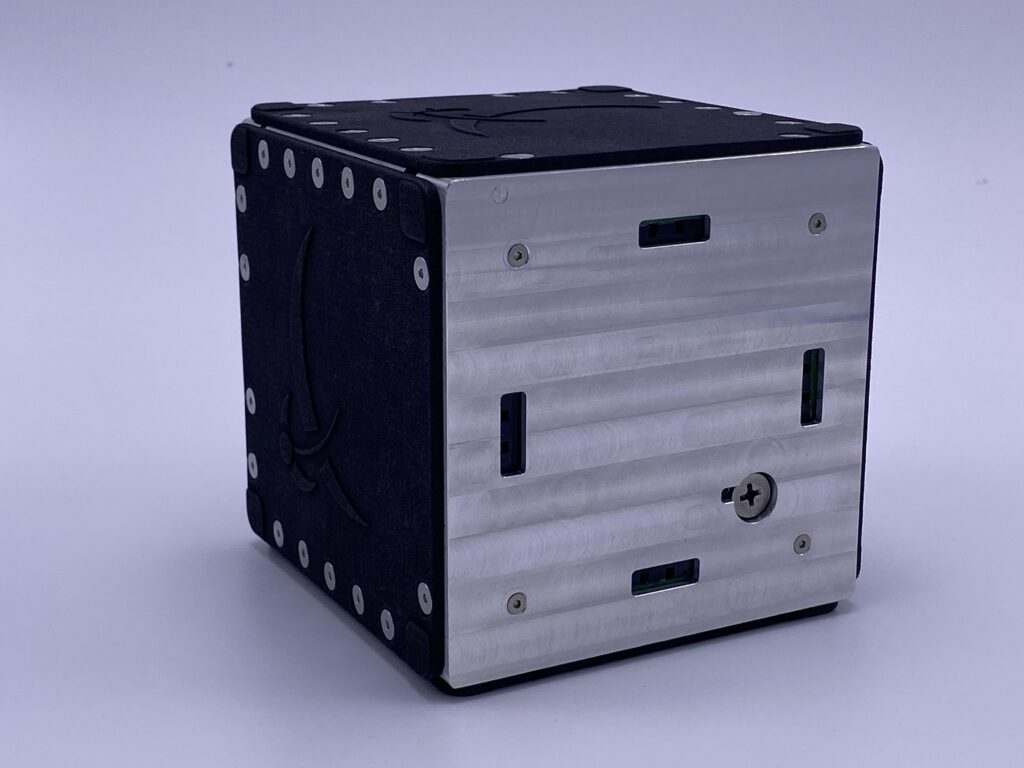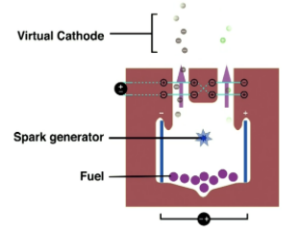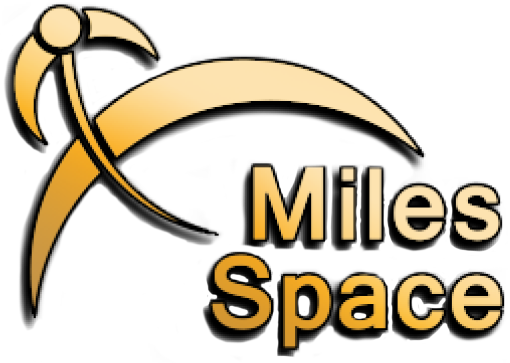
The M1.4 Thruster with ConstantQ™ Propulsion
Our thruster maneuvers satellites and spacecrafts with water, which proves to be a safe, energy efficient, and inexpensive propellant. ConstantQ™ provides strong and reliable thrust for any mission.
The Model M1 is a new form factor, now available for quick delivery from Miles Space. It has a 1U envelope and is designed for 3+U spacecraft needing:
- Orbit raising
- Orbit phasing
- De-orbit
- Drag makeup
- Desaturation of reaction wheels
- Attitude control
ConstantQ™ Water Propulsion offers:
- Efficient power use
- Non-toxic (low safety risk)
- Ease of transportation and ground support
- Ease of fueling/refueling
- Low handling costs
- Low Manufacturing costs
- Easily added to ride share
- Excellent fuel economy
- Powerful thrust
Miles Space offers low cost primary or secondary thrusters to satisfy the pending FCC regulations on maneuverability.
- Propellant: H2O (Filled as liquid. Liquid or solid during storage and use)
- Envelope: 95x95x95 mm (ie., 1U with 5mm margin)
- Wet Mass: 980 grams
- Propellant Load: 250 grams of liquid, pure water
- System Power: 6 Watts (Typical flow rate with all thrusters active)
- Max System Power: 18 Watts (Maximum flow rate with all thrusters active)
- Thermal Draw: 11.5 Watts (Heater on, no thrusters active)
- Temperature Range: -25C to +49C (Valves heated to 4C)
- Survival Temperature: -40C to 49C
- Input Voltage: 5V logic, 12V thrust
- Thrust: 17.2 mN (all thrusters active)
- Isp: 7,300 sec
- Total Impulse: 17,800 Ns
- Delta V: 4,620 m/s for 4kg 3U
2,273 m/s for 8kg 6U - Thrust/Power: 2.9 mN/Watt
- Thrust/Mass: 17.6 mN/kg
- Lifetime: >= 4x propellant load (based on ongoing experiments)
The above values for Thrust, ISP, Power, and Mass Flow are based upon experimental data available under NDA.
The ConstantQ™ family of thrusters use a pulsed electrostatic cycle to enable a variety of Earth-orbiting and deep space missions using water propellant. Test results show water’s vapor pressure and its plasma speciation are especially useful to this operating cycle.
A ConstantQ™ thruster has:
- a plasma formation region containing spark electrodes
- two exhaust ports, each ringed by acceleration electrodes
- a single power supply providing spark and acceleration power

Vapor enters the plasma formation region, expanding and changing pressure on its path towards the exhaust ports. Paschen’s law ensures a spark occurs within the vapor at the point where the supply voltage meets the pressure on the Paschen curve.
Each exhaust port is ringed with high voltage electrodes. One exhaust port’s voltages act to focus and extract positive ions from the plasma. The other affects electrons.
Electrons, being far less massive than ions, leave the plasma before ions, generating thrust from their interaction with the acceleration electrodes. Once outside the thruster, the electrons form a virtual cathode that pulls upon the ions remaining within the thruster.
As the ions leave, thrust is obtained from acceleration electrodes. However, the ions also derive kinetic energy from the virtual cathode, slowing the exhaust electrons and even causing electrons to flow back toward the thruster. This gives an increased acceleration voltage upon the ions, expanding the classic Child-Langmuir limits for space-charge flow rate and thrust density.
As the ions exit the thruster, they meet the returning electrons, neutralizing the plasma. With water vapor, the interface between exiting ions and returning electrons appears as a white-hot sphere 5-8mm outside the ion’s exhaust port. This phenomenon is believed to be due to the presence of multiple ion species with different velocity profiles. In the image below, the two exhaust ports are shown, with the electron port on the left and the ion port on the right. Note the distinctly different exhaust appearances of the two.

A resonance occurs between the incoming gas pressure, spark push back, and plasma drain rate through the exhaust ports (as driven by the supply’s high voltage which can be varied to align with mission Isp). The ConstantQ™ uses a very specific geometry to drive this resonance, minimize wear, reduce power supply complexity, and reduce flight computing demands.
ConstantQ™ thrusters have produced thrust using water vapor, Xenon, Argon, Krypton, Iodine, and air.
[ninja_tables id=”3316″]
